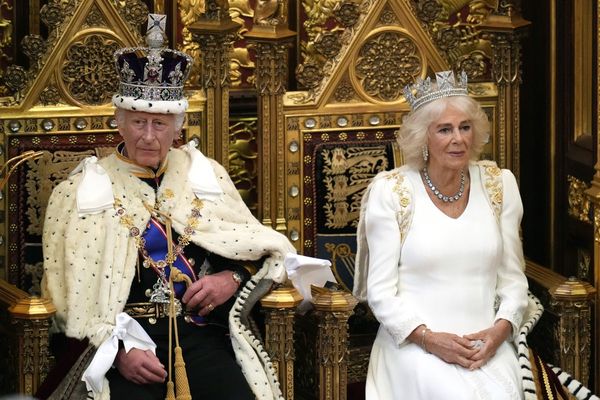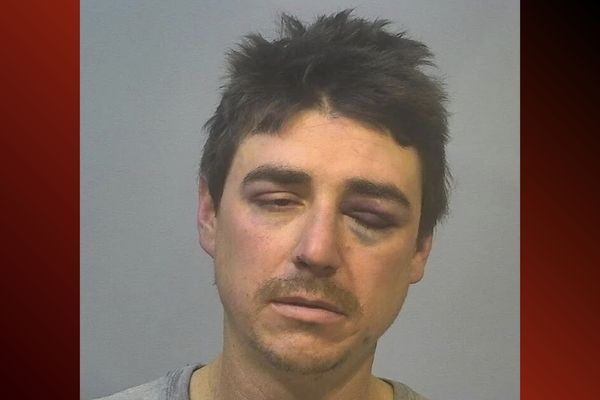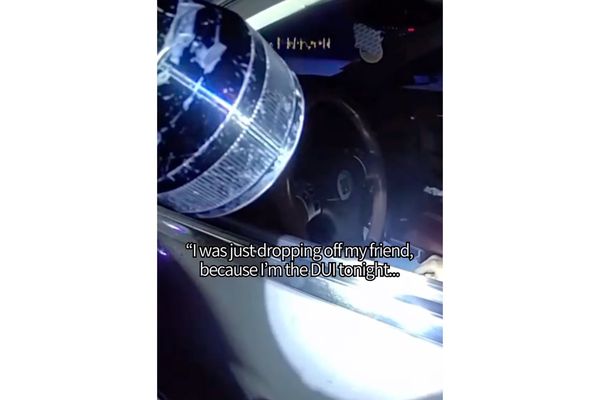
For 90 years, the voiturette racing cars produced by English Racing Automobiles in the 1930s have engendered passion and national pride. Motor racing in the 1930s was dominated by German and Italian marques, but in 1933 three British enthusiasts decided to get their country into the spotlight.
ERA was the brainchild of designer Peter Berthon, racer Raymond Mays and financier Humphrey Cook.Rather than try to go head-to-head with Maserati, Bugatti and the fast-emerging German teams, ERA aimed at the second-tier voiturette racing, loosely the Formula 2 of the time. Built in Bourne in Lincolnshire with engines based on the six-cylinder Riley unit, the first car was unveiled at Brooklands in May 1934.
Through until the outbreak of the Second World War, ERA won many races as well as the hearts of British fans. Thanks to changing regulations, they also appeared in top-level grands prix after the end of hostilities and, not much later, became part of the new historic-racing scene. Some have therefore remained active almost continuously and the passion for these front-engined racing cars, which could be regarded as the genesis of British single-seater success, remains 90 years after they arrived.
Just 17 such cars were built and all bar one survives. Most are still competing, though some are only raced sparingly at high-profile events.
The original: R1A

Chassis R1 was unveiled to the public in May 1934 and so began the ERA dynasty. The first machine was very much a works car and was later badged as R1A when the ‘B’-type emerged. As befits its status as the first ERA, it has a long, continuous and well-documented history.
Over the balance of the 1934 season, Mays took R1A to a string of race and speed event successes. Cook did much of the 1935 season in R1A, but Richard Seaman took the car over for a Donington Park race and finished second while awaiting completion of his own R1B. Tim Rose-Richards also used it to give ERA a first international result with third place in the Eifel Voiturette GP at the Nurburgring.
Jean Trevoux and Bill Humphreys were owners just before the Second World War and notable early post-war owners included Reg Parnell, David Hampshire and Ron Flockhart. It then passed through many hands before Sandy Murray owned it for more than two decades. During his tenure the body was restored to original dimensions.
In 1998, Dean Butler acquired the car and raced R1A himself, as well as entering it for Martin Walford and Julian Bronson in major historic race meetings across a decade.
R1A went to auction at Goodwood in 2008 and was bought for £359,000 by a private collector in Dorset. To the general dismay of enthusiasts across the world, R1A has not been seen in public for the past 16 years.
R2B ‘Romulus’

There are few, if any, ERAs that have been developed and changed less than the 1500cc R2B, known as ‘Romulus’, the mythical character raised by a wolf along with his twin brother ‘Remus’.
R2B was built in 1935 and was a 21st birthday gift to Prince Birabongse of Siam who, like his elder cousin and guardian Prince Chula, had moved to the UK to study at the age of 13. The young prince was drawn towards competition and proved to be a talented pilot who raced simply as ‘B Bira’, with the car prepared at the White Mouse Garage in Hammersmith.
At the wheel of R2B, Bira was competitive across the 1935 season, and claimed second place at Dieppe and fifth in the Donington GP in October. For 1936, Bira moved on to R5B, known as ‘Remus’, and then later to the ex-Whitney Straight Maserati 8CM. R2B remained with the team, was successfully campaigned in Britain, and eventually stayed in the ownership of the Chakrabongse family for more than 70 years.
In 2007 it was sold to American collector and former Microsoft executive Dr Greg Whitten, who has mainly raced it in the USA. Aside from a change of damper brand in 1937 and a move from a blue to a blue-and-yellow colour scheme in 1939, the car remains highly original. In the 1970s, marque expert Bill Morris extensively rebuilt the car – faithfully to the original specification – for a return to competition use.
Two-litre power: R3A

R3A started life as one of the first two-litre cars for works driver Raymond Mays and, after a spell with a 1500cc engine, has been back in two-litre trim for nearly half a century.
R3A delivered ERA’s first international win at the Nurburgring in 1935, and two years later Charlie Martin took it to a voiturette win at the high-speed Avus circuit in Germany. Tommy Wisdom was another early pre-war driver of R3A, which was then sold to Roy Hesketh in South Africa, where it stayed until 1957.
Notable post-war owners of this very original car include Hamish Moffatt, Rodney Smith and Dick Skipworth. It continues to be driven regularly by racer and journalist Mark Gillies, who has campaigned R3A for both Smith and Skipworth over more than two decades.
“The quick way around in an ERA is to brake a little early, get on the power early to dial out the understeer, and then just balance it on the throttle,” says Gillies. “It’s one of the best feelings you can have in a car.
“With R3A you know who sat in the cockpit and what they did, and that makes it even more special. So I’m just very, very lucky to be able to drive it. ERA is very special because it was one of the first purpose-built British racing cars, before BRM. From an early age, I just loved the way they looked.”
Hillclimb star: R4D

R4D remains one of the best known and most successful ERAs of all and was a famous pre-war car in the hands of Mays.
Mays was a keen competitor and was particularly successful at the Shelsley Walsh hillclimb where, in R4D, he set the final pre-war hill record at 37.37 seconds in June 1939. Fifteen years later, Ken Wharton set a new Shelsley record of 35.80s in R4D.
It actually started life as a B-type in 1935 but was converted to a C-type chassis for 1937 and then, in 1938, was reworked into R4D with a D-type chassis. Through until 1949 it ran at both 1500cc and 2000cc, but has been a two-litre car ever since.
After post-war service with Mays, Flockhart and Wharton, R4D has passed through the hands of some key figures in historic racing, including Neil Corner, Nigel Moores, Anthony Bamford, Anthony Mayman, Vijay Mallya and Mac Hulbert. During Hulbert’s tenure, his good friend Bronson won three times in a row at Monaco in R4D. It is now in the expert care of the Fidler family and used in competition by Ben Fidler.
“It’s the most special of the special and it was a great thrill for me to be able to race and sprint R4D,” says Hulbert. “The D-type ERA was probably the best-handling car that I’ve ever driven. I think it’s better even than a Maserati 250F. At Shelsley Walsh, you feel as though the car knows its own way up the hill.”
R5B ‘Remus’

Chassis R5B was another car built for Prince Bira, this time ahead of the 1936 season. He raced it for two seasons and it was nicknamed ‘Remus’ as the brother of ‘Romulus’. It ran in the same colour scheme of light blue with yellow wheels but did not enjoy the same level of success as R2B, though Bira did win the Albi Grand Prix on the five-mile road course in southern France.
It was then sold during 1937 to future Le Mans winner Tony Rolt, who raced R5B until the outbreak of war in September 1939. It had several short-term post-war owners, including Rolt’s Le Mans partner Duncan Hamilton!
In 1949, when owned by Peter Bell, R5B was raced by future Autosport technical editor John Bolster, who was lucky to survive an accident in the British GP when the car hit a straw bale and rolled over the top of the driver.
As the car evolved into a historic racing car, it was the Lindsay family that owned and raced R5B regularly for over 50 years. First it was the irrepressible art consultant Patrick Lindsay who raced it with determination to many Vintage Sports-Car Club successes. He also famously let reigning world champion Jim Clark have a (very rapid) go in Remus at Rouen in 1964…
Lindsay senior had at least one major accident in R5B, and then it passed to his son Ludovic, who made it one of the fastest pre-war single-seaters in historic racing, later with a two-litre engine.
Over the past decade, it has been owned and raced by Charles McCabe and expatriate Irishman Paddins Dowling.
The remaining 12
R1B

The 1500cc R1B was built for Richard Seaman and he raced it successfully in 1935 before driving a Delage and then moving to the factory Mercedes-Benz grand prix team.
R1B was then owned and raced before the Second World War by band leader Billy Cotton. Subsequent notable owners included Cuth Harrison, Patrick Marsh and, since 2007, German racer Michael Gans.
R2A

When new in 1934, R2A was fitted with a supercharged 1100cc engine and mainly raced by Humphrey Cook for the factory. When sold to Greek Nicky Embiricos at the end of 1935 it was upgraded to a 1500cc engine and soon had new independent front suspension fitted, both of which it retains. Long-term owners have included Brian Classic, Rodney Smith and now Paddins Dowling.
R3B

Remarkably, only one ERA has not survived in some form or been rebuilt into another identity, and that one is R3B. It was a works car in 1935 and 1936 but was crashed by Marcel Lehoux at Deauville in July 1936 following contact with Giuseppe Farina’s Alfa Romeo, with fatal consequences. The car was destroyed in the accident and the remains were later broken up and discarded.
R4A

Made famous by Bob Gerard in the immediate post-war era, R4A was the first customer car for Pat Fairfield. It has mostly been a two-litre car although used 1100cc and 1500cc engines at points and, during a spell in South Africa, it was briefly fitted with a Chevrolet motor. Nick Topliss now campaigns the car, which ex-British Touring Car ace Anthony Reid drove for an Autosport track test to celebrate the ERA’s 80th birthday!
R6B

From new in 1936, R6B was owned and briefly driven by Dr Dudley Benjafield, and even competed in ice racing. Both Reg Parnell and Bob Gerard had R6B in the 1940s and 1950s, and Gerard modified it and fitted a two-litre engine. It has experienced various technical experiments and tweaks, and was later converted back to 1500cc and raced by Sid Day, Jeffrey Pattinson and most recently Charles McCabe.
R7B

Arthur Dobson owned and raced R7B, in distinctive white with chrome radiator surround, from 1936 until the outbreak of war, and then sold it in 1945 to Leslie Brooke. It received various upgrades in the late-1940s and Dudley Gahagan was custodian for nearly four decades before it passed to Michael Rudnik. Now owned by the Wilton family and raced by Julian Wilton.
R8B/C

R8B was built in 1936 and raced by Earl Howe, including in the 1937 Donington GP. It was then rebuilt during the 1938 season into C-type specification around the chassis from R4C. The car was later briefly changed to a D-type chassis but was put back to C after a crash. Notable post-war pilots of R8B/C were Reg Parnell, Cuth Harrison and Graham Whitehead. The Spollon family have owned it since the late 1970s.
R9B

Dating from 1936 and always running in 1500cc trim, R9B was first raced by Birmingham stockbroker Dennis Scribbans. Post-Second World War, cousins Bob and Geoffrey Ansell from the brewing company raced the car with some success. The longest owner was Peter Mann, who had R9B for around 25 years in two instalments. Most recent owners are Rainer Ott and Heinz Bachmann.
R10B

From new in 1936, R10B was owned and raced by Peter Whitehead, who won the 1938 Australian GP in it, and only in 1949 did it briefly pass to Peter Walker, who fitted a two-litre engine for hillclimbing. Later, Nick Mason owned and raced R10B for a quarter of a century and had it rebuilt to full ‘B’ specification before it went to Paddins Dowling and then most recently to American racer Brad Baker.
R11B ‘Humphrey’

Owned from new in 1938 by Reggie Tongue, who named it ‘Humphrey’ after the ERA founder, R11B is now one of the longest-running and successful ERAs within the same family ownership. By 1951 R11B had been upgraded from a 1500cc engine to a two-litre unit and was bought by Martin Morris in 1961. Morris raced it regularly for decades until, in 2006, it passed to his son David.
R12B/C ‘Hanuman’

There are two cars under the R12 tag, both raced by Bira and known as ‘Hanuman’ and ‘Hanuman II’. R12B was a Raymond Mays car in 1936 and was rebuilt to ‘C’ spec for 1937. It was then sold to Prince Bira for 1938 as R12B/C and crashed at Reims in 1939. It was rebuilt on a ‘B’-type chassis and reverted to R12B. Bill Morris, who owned R12B at the time, rebuilt the damaged Reims chassis in the 1980s into R12C.
R14B

From 1938 to 1955, R14B was raced regularly by Johnnie Wakefield, Reg Parnell and Bob Gerard, who took it to second at the 1949 British GP. It was the last car built to the original design concept that had served well since 1934. But R14B is perhaps best known as the car that the redoubtable Donald Day owned and raced for 57 years right up until 2015. It is now in the hands of American Chris MacAllister.
The other ERAs

In a bid to keep up with the ferocious pace of car development from Germany in the late 1930s, ERA unveiled E-type GP1. The sleek, low-line car was markedly different to the earlier generation of upright ERAs.
Raymond Mays gave GP1 its debut at Brooklands in 1938. Humphrey Cook continued the development of the E-type during 1939, though GP1 suffered reliability issues and an accident at Albi in France when being driven by Arthur Dobson. The outbreak of war in September 1939 brought the project a halt.
Post-war, Peter Walker had an accident on the Isle of Man in 1950 in GP1, and the car fell into disuse. Finally, in the 1990s, ERA enthusiast Duncan Ricketts acquired the car as a project and worked painstakingly to take it back into historic competition, where it has looked and gone better than it ever did before.
Meanwhile, the second E-type chassis, tagged as GP2, was raced in the late 1940s by Leslie Johnson, but was soon abandoned as a race car and spent many years in the Donington Grand Prix Collection. More recently it was bought by Jolyon Harrison, who entrusted it to James Baxter for a stunning restoration, and the car reappeared this summer in a range of speed events.
AJM1 was a 1.5-litre car based on B-type specification and built up from parts by Anthony Merrick. It has been raced extensively ever since, and now resides with the Fidler family.
Finally, there was an ill-fated G-type produced for Formula 2 in 1952 and raced occasionally by Stirling Moss. It failed to make much of an impression and was later sold to the Bristol Aircraft Company, where it was used to develop the Bristol 450 sportscar, which went on to class success at Le Mans in 1954.








